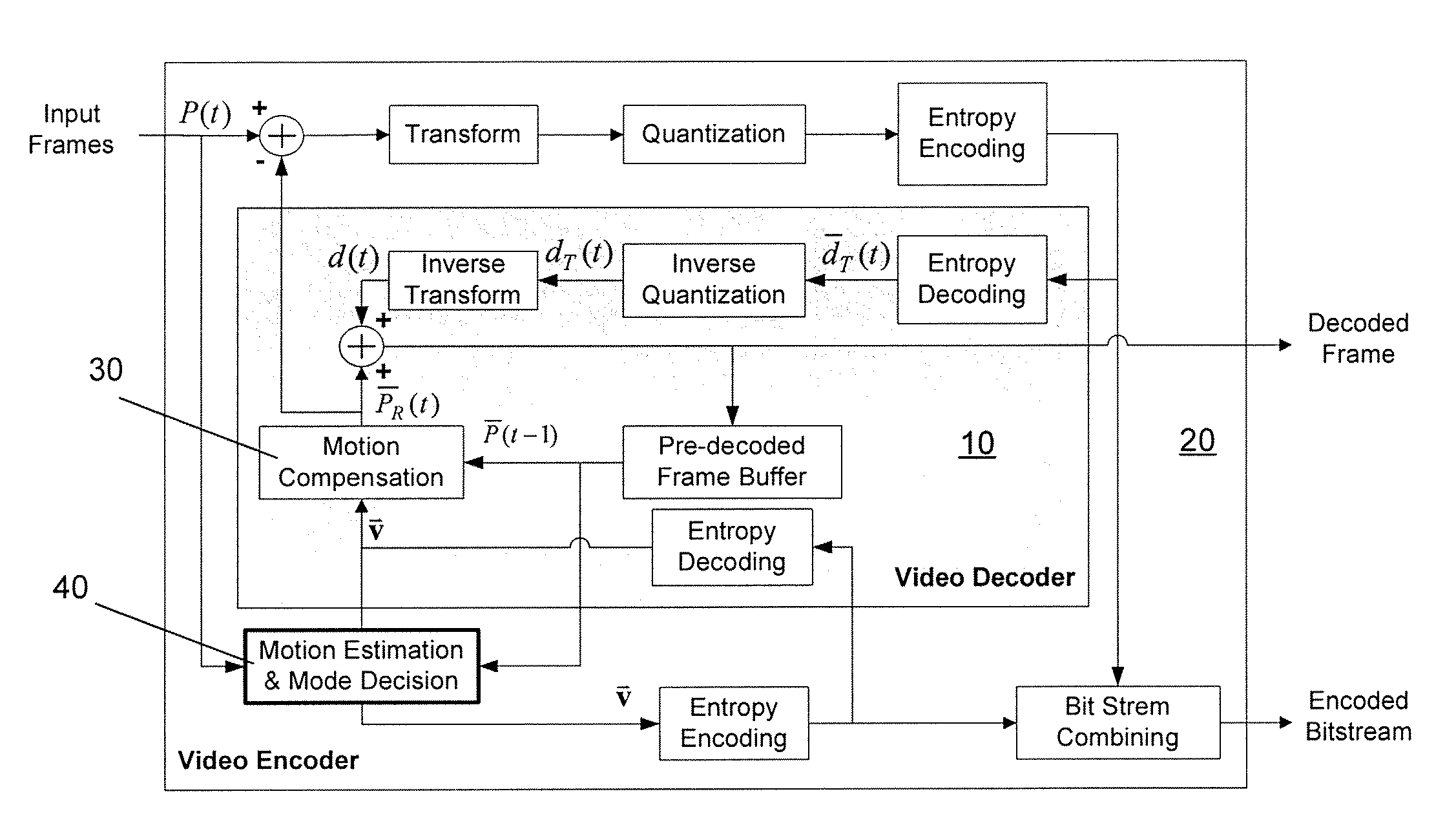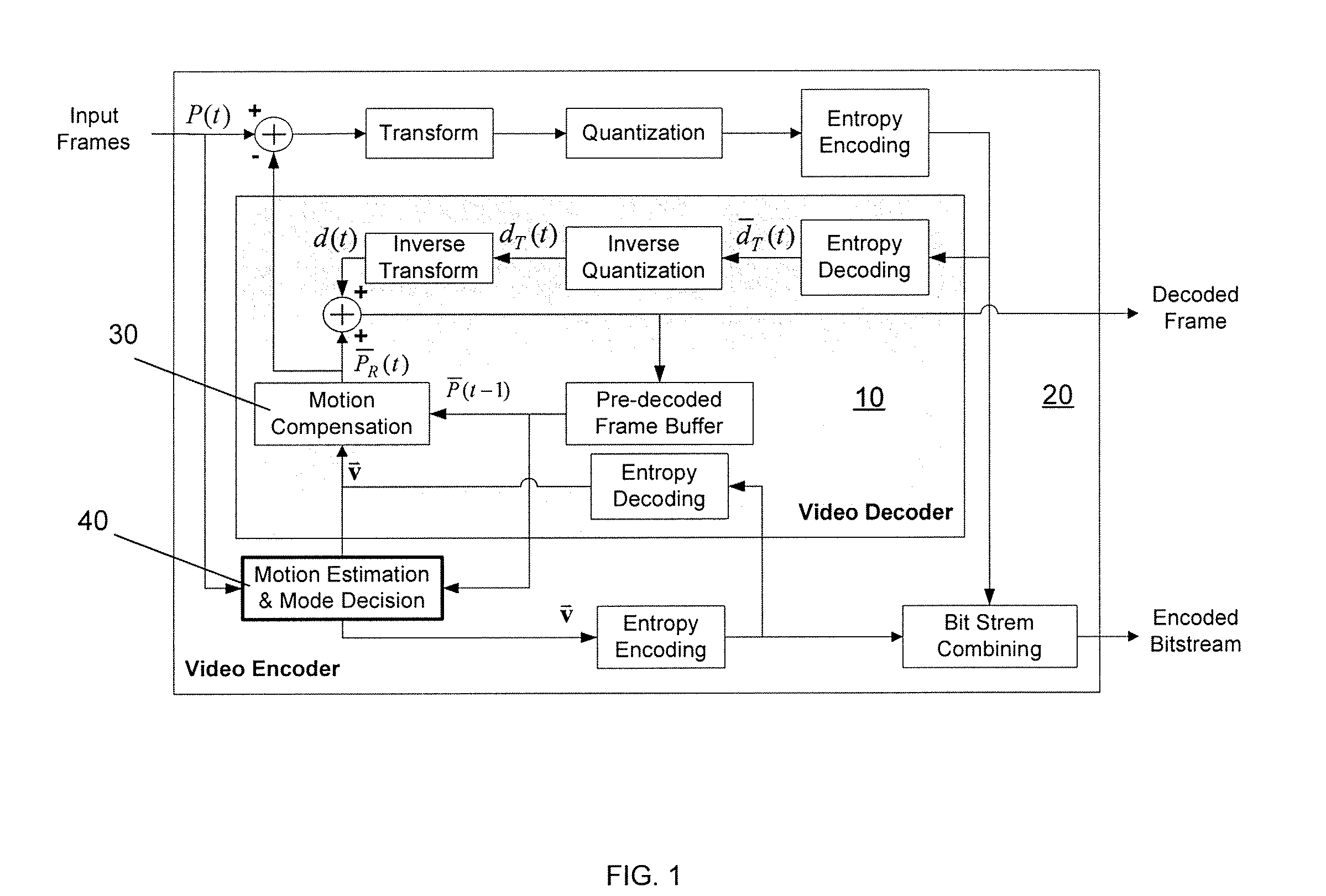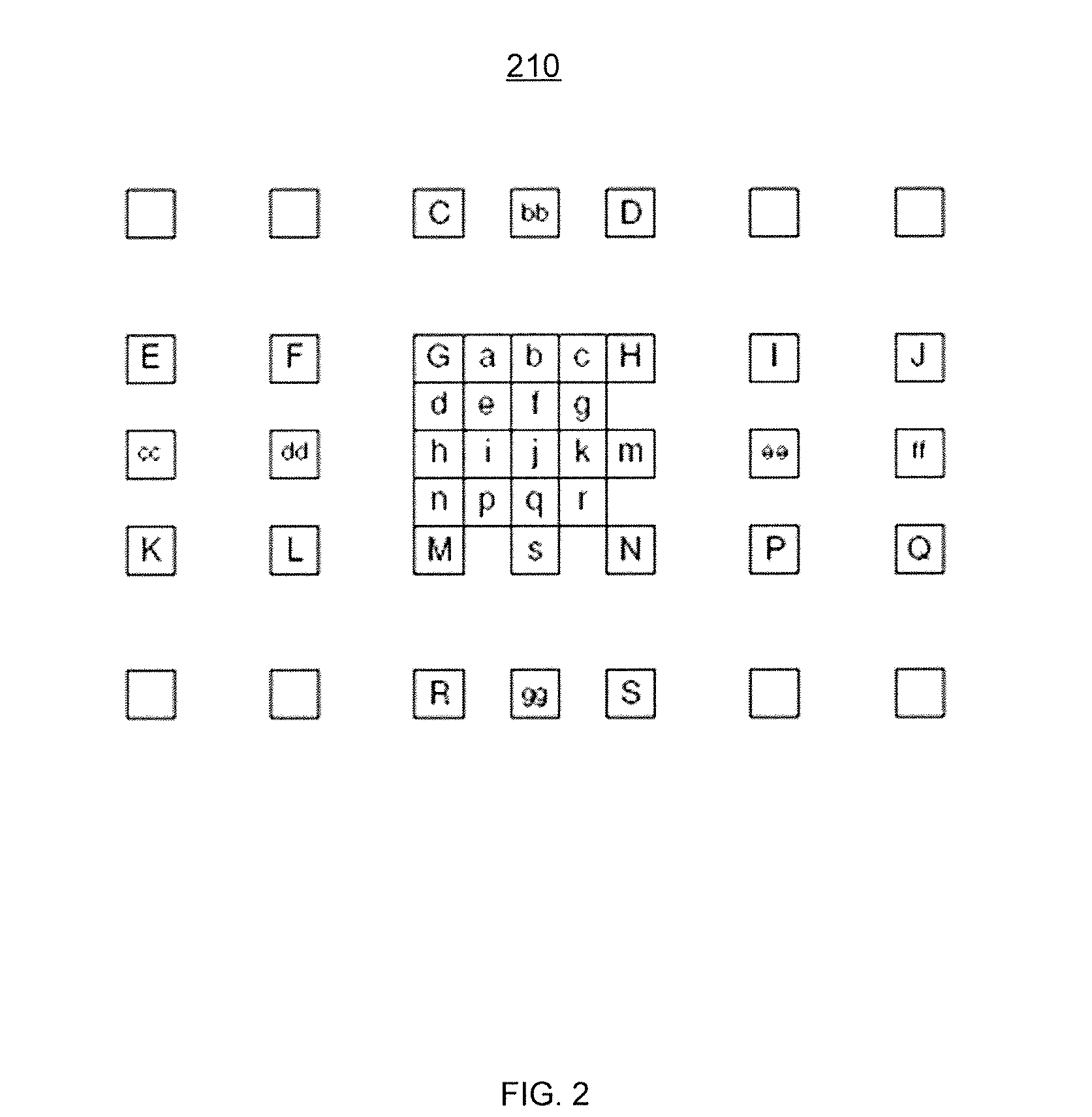System and method for motion estimation and mode decision for low-complexity h.264 decoder
a motion estimation and mode decision technology, applied in the field of systems and methods for motion estimation and mode decision for low-complexity h.264 encoders/decoders, can solve the problems of large computational complexity at both the encoder and the decoder, substantial power consumption, and large computational resources required for encoded videos produced by such compression standards. to achieve the effect of reducing the computational cost of decoding
- Summary
- Abstract
- Description
- Claims
- Application Information
AI Technical Summary
Benefits of technology
Problems solved by technology
Method used
Image
Examples
Embodiment Construction
[0024]The present invention relates to an important aspect of the complexity minimization problem in video decoding—i.e., developing an encoding algorithm that achieves both high video quality and low decoding complexity while satisfying the bit rate constraint. The object is to reduce the complexity requirement of emerging video codecs, such as H.264, particularly on resource-limited devices such as handheld devices. The present invention is different from the approaches described above in that the present invention modifies the video encoding algorithm to minimize the required complexity at the decoder, not the encoder. The approach does not require substantial modification to existing decoder implementations. The present invention may be implemented such that it modifies the non-normative parts of, e.g., the H.264 encoding algorithm, such that it is compatible with standards-compliant decoders. However, the present invention is not limited to H.264, but may be implemented in acco...
PUM
 Login to View More
Login to View More Abstract
Description
Claims
Application Information
 Login to View More
Login to View More - R&D
- Intellectual Property
- Life Sciences
- Materials
- Tech Scout
- Unparalleled Data Quality
- Higher Quality Content
- 60% Fewer Hallucinations
Browse by: Latest US Patents, China's latest patents, Technical Efficacy Thesaurus, Application Domain, Technology Topic, Popular Technical Reports.
© 2025 PatSnap. All rights reserved.Legal|Privacy policy|Modern Slavery Act Transparency Statement|Sitemap|About US| Contact US: help@patsnap.com



